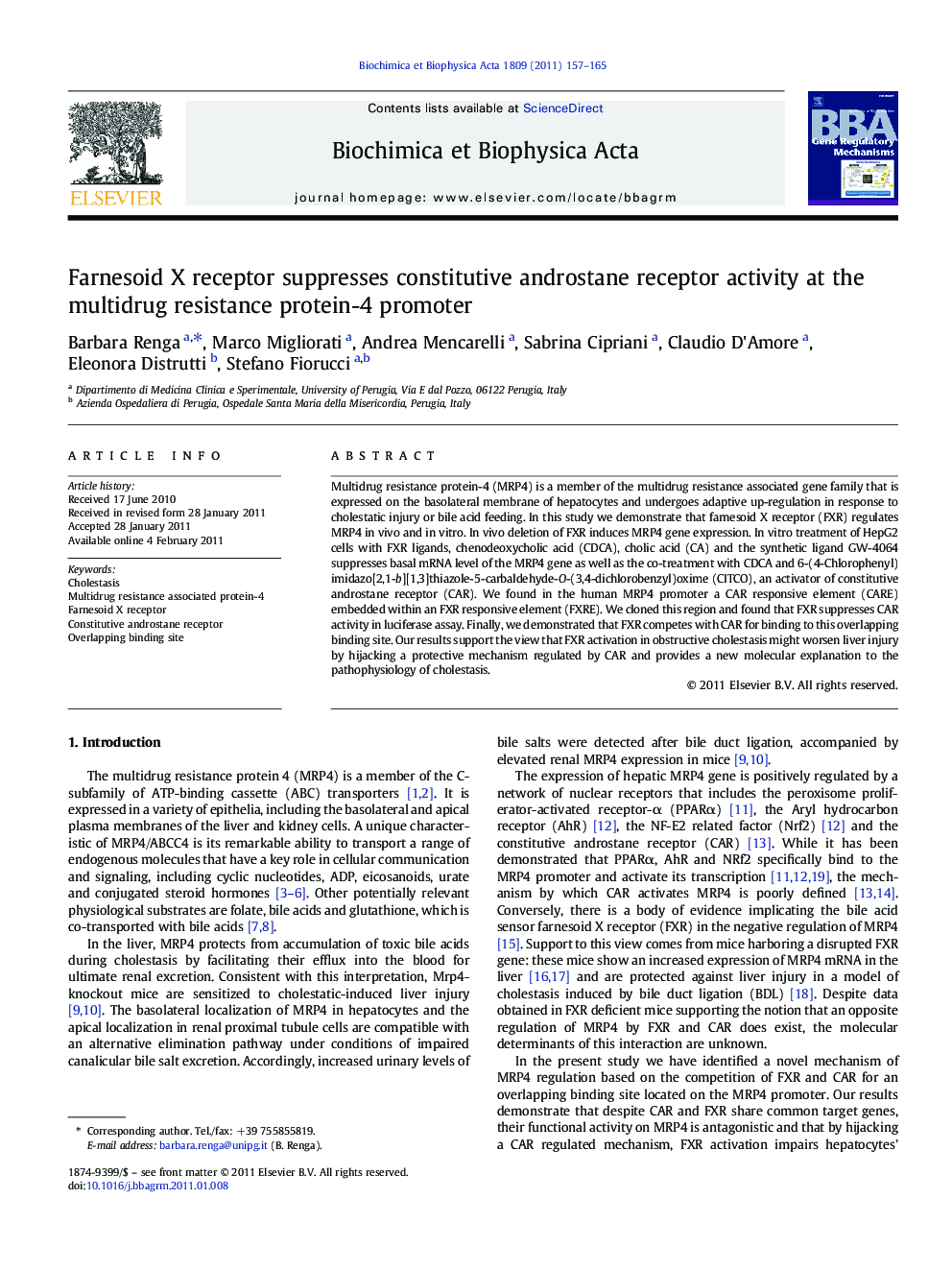| Article ID | Journal | Published Year | Pages | File Type |
|---|---|---|---|---|
| 1946705 | Biochimica et Biophysica Acta (BBA) - Gene Regulatory Mechanisms | 2011 | 9 Pages |
Multidrug resistance protein-4 (MRP4) is a member of the multidrug resistance associated gene family that is expressed on the basolateral membrane of hepatocytes and undergoes adaptive up-regulation in response to cholestatic injury or bile acid feeding. In this study we demonstrate that farnesoid X receptor (FXR) regulates MRP4 in vivo and in vitro. In vivo deletion of FXR induces MRP4 gene expression. In vitro treatment of HepG2 cells with FXR ligands, chenodeoxycholic acid (CDCA), cholic acid (CA) and the synthetic ligand GW-4064 suppresses basal mRNA level of the MRP4 gene as well as the co-treatment with CDCA and 6-(4-Chlorophenyl)imidazo[2,1-b][1,3]thiazole-5-carbaldehyde-O-(3,4-dichlorobenzyl)oxime (CITCO), an activator of constitutive androstane receptor (CAR). We found in the human MRP4 promoter a CAR responsive element (CARE) embedded within an FXR responsive element (FXRE). We cloned this region and found that FXR suppresses CAR activity in luciferase assay. Finally, we demonstrated that FXR competes with CAR for binding to this overlapping binding site. Our results support the view that FXR activation in obstructive cholestasis might worsen liver injury by hijacking a protective mechanism regulated by CAR and provides a new molecular explanation to the pathophysiology of cholestasis.
Graphical AbstractsFigure optionsDownload full-size imageDownload high-quality image (279 K)Download as PowerPoint slideResearch highlights► FXR negatively regulates the expression of MRP4 in vitro and in vivo. ► FXR and CAR exert antagonistic effects at the MRP4 promoter. ► Human MRP4 promoter contains an overlapping binding site for FXR and CAR.
